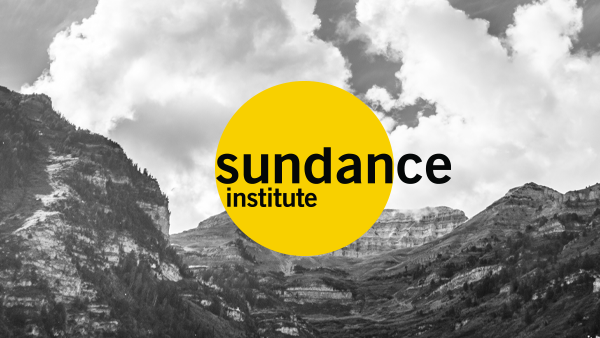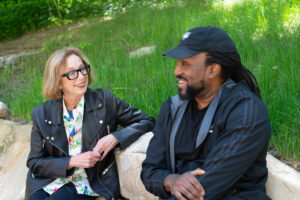John Nein
But each festival gives us a chance to watch the watchers—to see how audiences get to watch the movies. And every festival has its own vibe. In Park City, people line up in the cold—sometimes for hours. It’s a badge of honor. For the filmmakers, it’s an audience that really wants to see your film. But what’s it like watching films…by the Black Sea? In a Czech spa town? An Italian piazza?
Sochi, Russia
The Black Sea resort of Sochi, site of the 2014 Winter Olympics, has been a favorite vacation spot for Russians for decades. With its pebble beaches instead of sand, and offshore trawlers instead of yachts, it might not be Cannes, but it’s sunny, lively locale with good food (including several excellent Georgian restaurants, despite recent tensions) and plenty of vodka. One thing one learns very quickly is that it’s quite difficult (impolite) to avoid the myriad toasts that occur at dinner.
Of course, there are challenges: most people don’t speak English and the alphabet bears no resemblance to your own. My iPhone covered me for about 200 basic phrases, but thankfully I met a Bulgarian woman from Sophia Film Festival. Mira spoke English and Russian, which made everything a lot easier. Being Bulgarian, she could also read my fortune amidst coffee grinds in a cup.
Sochi is the site of the Kinotavr, a twenty-year old festival that showcases new Russian films. Regular audiences watch films in a couple venues, including the outdoor “Winter Theater.” But those of us industry folks whose Russian is…uh, not so good, converge upon the screening room at the Zhemshuzhina hotel (say it ten times without stopping), which offers film presented with simultaneous translation. This involves headsets make us feel like we’re in the U.N. We grew fond of all three of the festival’s translators, even the curmudgeonly, monotone guy who evidently begrudged the fact that he was translating for only ten people.
Karlovy Vary, Czech Republic
Like many 900 year old towns, Karlovy Vary has changed dramatically over the years – destroyed by fire and rebuilt several times. It’s current form is something of a marvel, with ornately designed 19th century buildings that line the banks of a small river that winds its way through town. Karlovy Vary is a spa town and visitors partake of the spring waters, reputed to be restorative and energizing, although I can’t attest to this since, with all their minerals, they strike me as only marginally more enticing than bath water.
The International film festival that happens here every year centers on the fantastic cinema center, build during the communist era as a way of showing that the communist countries could have their own Cannes. What’s great about the festival audiences though is that they come from all over the Czech Republic and other European countries to watch films. Many of them bring camping gear and pitch their tents at a local sports stadium which is opened to campers during the festival. As a result – like Sundance – you have a lot of people who really went out of their way to come to watch movies. Every theater is packed for every screening.
There’s quite an international contingent as well, including some Americans. I’ve always found it amusing that you can travel seven thousand miles and wind up having lunch with somebody who works seven blocks from you – in this case producer Ron Yerxa, who came to the festival as the President of the Jury.
Galway, Ireland
This small town on the west coast of Ireland, a tourist destination year-round, hosts a film festival each June, presenting a handful of new Irish films. Feels small and intimate. You can count on it raining most of the time, which makes being in a theater all day less painful. But the town is lovely and always can be counted upon for excellent fish and chips, traditional Irish music and anything made of wool.
The films are reliably good as well. The festival, called the fleadh (pronounced fläh), attracts film people from all of Ireland and the main screening take place at the Town Hall Theater, an intimate spot usually reserved for stage plays. After each screening, the entire festival crowd seems to turn up at the Rowing Club. Although the space may bear some relationship to rowing at other times of the year, oars or coxswains are not in evidence. But pints of Guinness and glasses of Jameson are aplenty.
Locarno, Switzerland
Nestled by a lake, just a few miles from the Swiss-Italian border, Locarno is the site of one of the more enjoyable festivals in the world. With over two hundred films to see, there’s not much time to enjoy the setting, but for the moments you find yourself mingling at festival gatherings, it doesn’t hurt that the gathering is beside Lake Maggiore. All work and no play…
Locarno also boasts the largest outdoor screening in the world. Each night, upward of 7,000 spectators fill the town’s Pizza Grande to watch films under the starlight. If you’re really ambitious, you can book an outdoor table at one of the many restaurants that line the square and enjoy a dinner and a movie. Movies are cast onto a huge screen from a projector booth that is the size of most people’s living room.
So while drive-in theaters and outdoor screenings are virtually extinct in most places, audiences in Locarno (weather permitting) are entreated to one of the more pleasant movie-watching experiences in the world.




